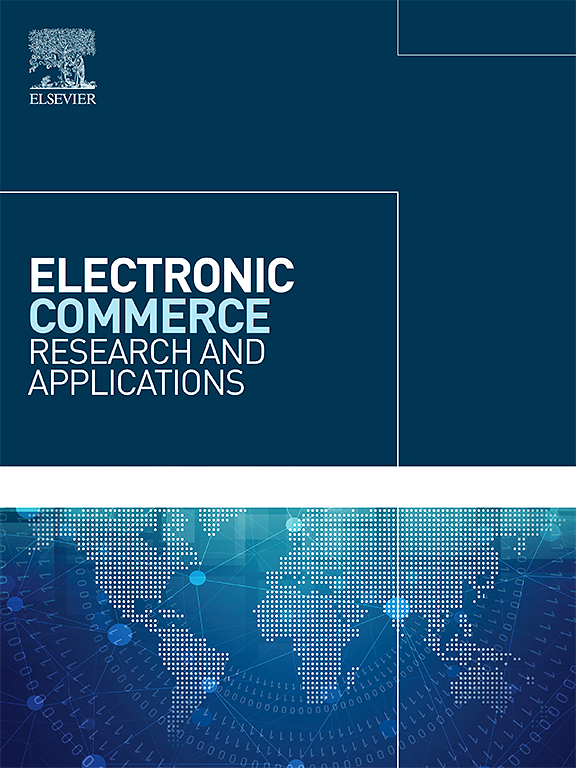Whether and how to adopt live streaming Selling: A perspective on interaction value creation
IF 5.9
3区 管理学
Q1 BUSINESS
Electronic Commerce Research and Applications
Pub Date : 2024-11-01
DOI:10.1016/j.elerap.2024.101464
引用次数: 0
Abstract
As live streaming selling continues to be an emerging channel with many uncertainties, brand manufacturers must adopt a deliberate approach to utilize this medium and develop their capabilities effectively. This study examines the adoption of live streaming selling by considering customers interacting with the streamer in real-time to acquire more product information and additional interaction value. Three sales models are constructed: the traditional selling channel (Model T), the live streaming selling channel (Model L), and the dual channel that combines traditional selling and live streaming selling (Model TL). The impact of live streaming selling on value creation is revealed through a comparative analysis. Finally, as an extension model, we consider the scenario where manufacturers pay streamers different commissions based on actual market demands. The results show that adopting live streaming selling depends on the commission and operating costs of live streaming. When the commission paid to the streamer is low, contemplating live streaming selling can create more value for all parties. When the commission is moderate, the manufacturer should adopt the dual channel of traditional selling and live streaming selling to create more value. Conversely, when the commission and operating costs are high, adopting live streaming selling is not recommended. Furthermore, when market demand is high, manufacturers achieve greater profits by paying streamers a fixed commission. Conversely, when market demand is low, manufacturers gain higher profits by paying streamers different commissions based on actual market demand.
是否以及如何采用直播销售:互动价值创造视角
由于直播销售仍是一个新兴渠道,存在许多不确定因素,品牌制造商必须采取审慎的方法来利用这一媒体,并有效地发展自身能力。本研究通过考虑客户与直播者的实时互动来获取更多产品信息和额外的互动价值,从而研究直播销售的采用情况。研究构建了三种销售模式:传统销售渠道(T 模式)、直播销售渠道(L 模式)以及传统销售与直播销售相结合的双渠道(TL 模式)。通过比较分析,揭示了直播销售对价值创造的影响。最后,作为扩展模型,我们考虑了制造商根据实际市场需求向流媒体支付不同佣金的情况。结果表明,采用直播销售取决于直播的佣金和运营成本。当支付给直播者的佣金较低时,考虑直播销售可以为各方创造更多价值。当佣金适中时,制造商应采用传统销售和直播销售双渠道,以创造更多价值。相反,当佣金和运营成本较高时,则不建议采用直播销售。此外,当市场需求量大时,制造商可以通过向直播者支付固定佣金获得更大利润。相反,当市场需求较低时,制造商可根据实际市场需求向分流者支付不同的佣金,从而获得更高的利润。
本文章由计算机程序翻译,如有差异,请以英文原文为准。
求助全文
约1分钟内获得全文
求助全文
来源期刊

Electronic Commerce Research and Applications
工程技术-计算机:跨学科应用
CiteScore
10.10
自引率
8.30%
发文量
97
审稿时长
63 days
期刊介绍:
Electronic Commerce Research and Applications aims to create and disseminate enduring knowledge for the fast-changing e-commerce environment. A major dilemma in e-commerce research is how to achieve a balance between the currency and the life span of knowledge.
Electronic Commerce Research and Applications will contribute to the establishment of a research community to create the knowledge, technology, theory, and applications for the development of electronic commerce. This is targeted at the intersection of technological potential and business aims.
 求助内容:
求助内容: 应助结果提醒方式:
应助结果提醒方式:


